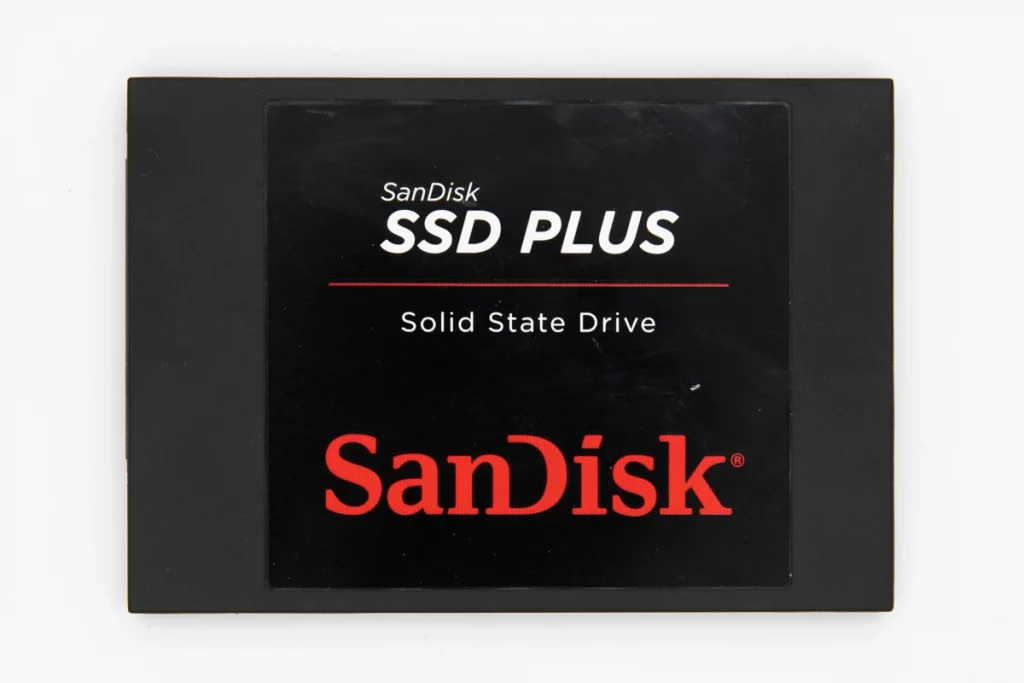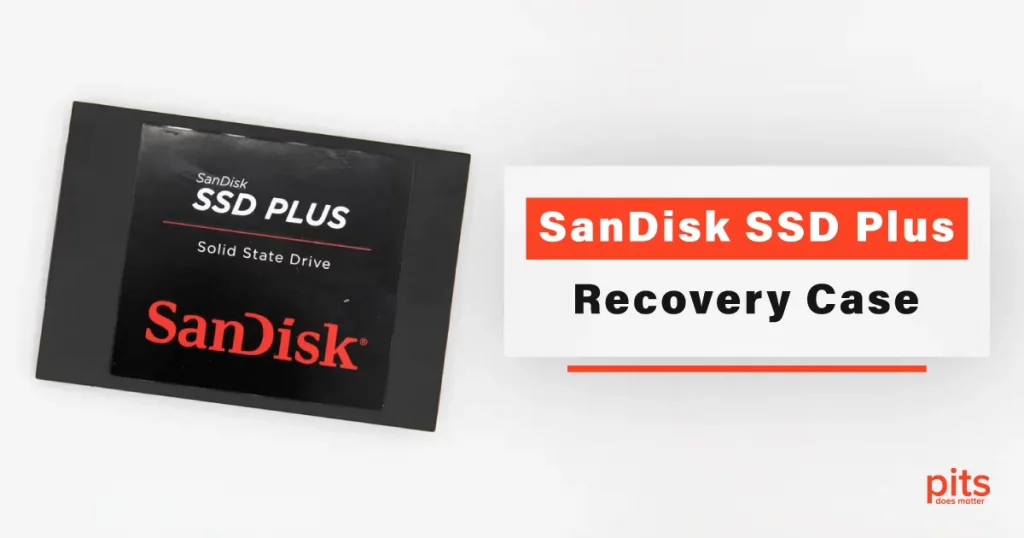PITS Global Data Recovery Services recently received a case regarding a SanDisk SSD Plus failure. The user had experienced issues with the device and realized something was wrong. After a quick search online, he discovered our company and reached out for assistance.
Background of Overwritten Files on SanDisk SSD Plus
In this particular case, the user had been using a SanDisk SSD Plus as an operating system drive for their computer. The device had been working well for a few months until he started experiencing slow transfer speeds and occasional freezing of the files stored on it.
But what was the reason? He could not find anything wrong with the device, and he had been careful to maintain it well.
To get to the root of the problem, the user decided to conduct some investigations on their own. He started by checking the drive for any signs of physical damage, but they could not find any. The next step was to check the device’s firmware, and again, everything seemed to be in order.
However, upon closer inspection, the user noticed that some files were missing from their SSD. These were files that the user had previously saved on the drive, but now they seemed to have disappeared. Upon further investigation, the user discovered that new data had overwritten these files. Slowly, the drive had started malfunctioning and files were either taking a long time to open or not opening at all.
The user had tried various troubleshooting steps, such as running disk checks and updating drivers, but none of these seemed to solve the issue. Finally, he contacted us for technical support and provided us with details of his case.
"*" indicates required fields
Evaluation of SanDisk SSD Plus
Our team promptly responded to the request and provided the user with a risk-free evaluation of his SSD drive. We found that the SanDisk SSD Plus had suffered a significant failure, and data recovery was necessary.
The SanDisk SSD Plus is a popular storage device that boasts burst write performance and faster boot-ups and shutdowns. It is also known for being cooler and quieter than traditional hard drives. However, despite its many advantages, the SanDisk SSD Plus is still vulnerable to data loss.
How Our Experts Recovered SanDisk SSD
After the customer approved the results of the evaluation, our team immediately began the data recovery process. We utilized our cutting-edge tools and technologies to recover data from the SSD drive. We were able to recover all of the user’s files, including audio, video, and various file types.
Our team used advanced recovery techniques to recover deleted files and file types that the user thought was lost forever. We even managed to recover files that were overwritten.

After a thorough recovery process, we successfully recovered data from the SanDisk SSD Plus. Our team immediately scheduled a verification session so the customer could review the recovered files and inform us if any were missing. The user noted that all of his important files were recovered, and we were pleased to have been able to help.
Successful Recovery of SSD Plus
At PITS Global Data Recovery Services, we pride ourselves on delivering high-quality services to our clients. Our expert team of professionals is highly trained and experienced in Sandisk Data Recovery. We use the latest tools and technologies to recover our clients’ data quickly and efficiently. Whether you require file recovery or destruction services, our range of options ensures we can meet our clients’ needs.
Frequently Asked Questions
Can data be recovered from a SanDisk SSD Plus?
Yes, data recovery is possible from a SanDisk SSD Plus in certain circumstances. However, it is important to note that data recovery can be a complex and delicate process, and the success of recovery depends on various factors, including the nature of the data loss and the condition of the SSD.
What are some common reasons for data loss on a SanDisk SSD Plus?
- Accidental deletion. If files are accidentally deleted from the SSD, they may be recoverable until new data is written over them.
- Formatting. Formatting the SSD without proper backup can lead to data loss, but recovery may be possible if the data hasn’t been overwritten.
- File system corruption. Corruption of the file system can make files inaccessible, but with appropriate recovery methods, data can often be retrieved.
- Malware or viruses. If the SSD gets infected by malware or viruses, it can result in data corruption or loss.
- Physical damage. Physical damage to the SSD, such as electrical issues or mechanical failure, can lead to data loss. In such cases, professional data recovery services may be required.
How can I attempt data recovery from a SanDisk SSD Plus?
- Stop using the SSD: To avoid overwriting the lost data, immediately stop using the SSD and disconnect it from any power source.
- Consult a professional: If the data on the SSD is crucial or if you are unsure about performing data recovery yourself, it is recommended to seek assistance from a professional data recovery service. They have specialized tools and expertise to handle SSD data recovery.
- DIY recovery software: In some cases, using reputable data recovery software may help in recovering data from a SanDisk SSD Plus. However, proceed with caution, as improper usage can potentially cause further damage or permanent data loss.
Can I recover data from a physically damaged SanDisk SSD Plus?
Recovering data from a physically damaged SanDisk SSD Plus can be challenging and requires professional assistance. If the SSD has suffered physical damage due to impact, electrical issues, or other factors, it is advisable to contact a reputable data recovery service that specializes in handling physically damaged storage devices.
Is data recovery guaranteed on a SanDisk SSD Plus?
Data recovery is not always guaranteed, especially in cases of severe physical damage or overwriting of data. The success of data recovery depends on factors such as the extent of damage, the recovery methods used, and the condition of the data on the SSD. It is important to manage expectations and consult professional services for the best chance of successful data recovery.
How can I prevent data loss on a SanDisk SSD Plus?
To minimize the risk of data loss on a SanDisk SSD Plus, consider the following precautions:
- Regularly back up your important data to a separate storage device or cloud storage.
- Use reliable antivirus software to protect against malware and viruses that could potentially corrupt or delete data.
- Handle the SSD with care and avoid exposing it to extreme temperatures, moisture, or physical damage.
- Avoid abrupt power loss or improper shutdowns, as these can potentially lead to data corruption.
- Regularly update the SSD firmware to ensure optimal performance and compatibility with the operating system.
What should I do if my BIOS does not recognize my SanDisk SSD Plus?
If your BIOS does not recognize your SanDisk SSD Plus, ensure the drive is properly connected to your motherboard. Check the SATA cable and power connections. If the problem persists, try the SSD in a different computer or SATA port to rule out a faulty port or system.
If these steps don’t resolve the issue, the SSD could be defective; consult professional data recovery services. In certain situations, the SSD may have technical issues beyond simple troubleshooting, and attempting DIY recovery can risk further data loss. PITS Global Data Recovery Services specializes in SSD data recovery and can offer expert assistance.
